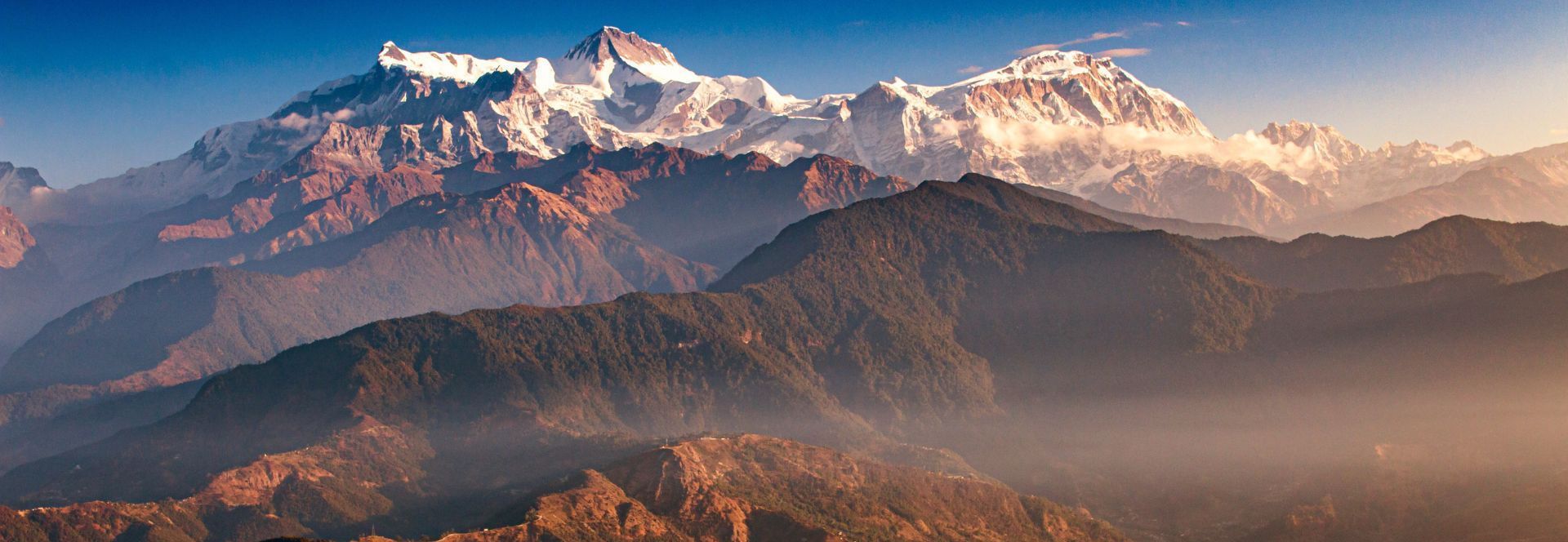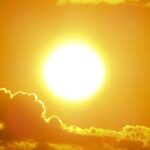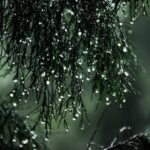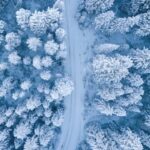
Nepal
Nepal, home to the world’s highest peaks including Mount Everest and the Annapurna range, is a destination where adventure and spirituality meet. Travellers flock here for the best treks in Nepal, from the Everest Base Camp to the Annapurna Circuit, as well as cultural tours of Kathmandu Valley with its UNESCO World Heritage sites. Beyond trekking, Nepal offers wildlife safaris in Chitwan, spiritual journeys in Lumbini—the birthplace of Buddha—and traditional practices like yoga and meditation retreats. Whether you seek hiking in the Himalayas, holistic healing, or cultural exploration, Nepal promises an unforgettable journey.
Top Things to Do in Nepal
Cruise From The Peaks To The Plateau
Embark on a thrilling Kathmandu to Tibet biking adventure, cycling through Nepal’s rugged and dramatic landscape. This unique route takes you from the vibrant streets of Kathmandu to the high-altitude passes leading to Tibet, offering breathtaking views of the towering Himalayas. As you ride, you’ll pass through ancient monasteries, picturesque villages, and experience the incredible diversity of the Himalayan foothills. The journey is a blend of
adventure and cultural immersion, with every turn revealing something new and awe-inspiring.
Ready to hop on your bike and ride through Nepal’s untamed landscapes, uncovering its hidden treasures along the way?
Best time to visit: April to October
Journey into Nepal’s Spiritual Masterpiece
Step into the world of Nepal’s sacred art with the intricate tradition of Thangka paintings. These vibrant artworks, typically created on silk or cotton, depict sacred Buddhist deities, mandalas, and teachings, serving as both a form of worship and meditation. Each Thangka is meticulously painted with natural pigments and often embellished with gold leaf to highlight the divine. The process involves a deep understanding of Buddhist philosophy and symbolism, with every brushstroke holding profound meaning. Traditionally displayed in monasteries and temples, Thangkas are used during rituals and prayers to inspire contemplation and spiritual connection.
Excited to try your hand at this sacred art and connect with its spiritual essence?
Best time to Visit: All year round
A Staycation In Solitude And Luxury
Step into the lap of luxury in the remote reaches of the Himalayas, far from the bustle of modern life. Here, the timeless rhythm of nature and the rich heritage of Tibetan culture offer an immersive experience unlike any other. Embrace the serenity of the mountains, where every moment connects you to the land and its people. Experience the magic of the Himalayas, from its untouched beauty to the warm hospitality of its inhabitants. This retreat is a perfect escape for those seeking tranquility, adventure, and a deep connection to nature and culture, all wrapped in the luxury of simplicity.
Prepared to immerse yourself in this extraordinary way of life?
Best time to visit: April to November
Monks, Monasteries, & Spirituality
Step into the peaceful world of Nepal’s monastic life by staying with monks in a serene, remote monastery nestled in the hills. One of the most sacred rituals is the morning chanting and prayer ceremony, where monks gather before dawn to chant sacred mantras and offer prayers for peace. The rhythmic sounds of bells and drums fill the air as the monks, dressed in robes, engage in deep meditation and reflection. This practice connects them to their spiritual path and the divine. It’s an opportunity for you to witness this deeply rooted tradition and experience life at its most tranquil.
Would you like to be part of this ancient rhythm of peace and reflection?
Best time to visit: All year round (Except during festivals)
Of Fierce Warriors & Khukuris
Legend has it that during his quest to unite Nepal’s fragmented kingdoms, Prithvi Narayan Shah faced a powerful rival king. Outnumbered, his forces were on the brink of defeat. In the final, decisive moments, Shah unsheathed his trusted Khukuri. With unparalleled skill, he sliced through enemy ranks, leading his soldiers to victory. As the battle raged on, Shah’s swift strike brought down the rival king, sealing the triumph. That single, powerful blow not only secured his victory but also immortalized the Khukuri as a symbol of strength, honour, and the legendary might of the Gorkha warrior.
Ready to meet the resilient people of Nepal, where tradition, bravery, and warm hospitality await at every turn.
Best time to visit: March to September
Blessings Of The Living Deity
In the heart of Kathmandu lives the Kumari, a young girl chosen to embody the goddess Taleju. Selected through strict criteria, she resides in the Kumari Ghar, a temple-palace, where she lives a life of ritual and reverence. Once chosen, the Kumari’s presence is considered divine, and she is revered by both Hindus and Buddhists. Her most sacred moment comes during the Indra Jatra Festival, when she is paraded through the streets of Kathmandu in a grand chariot, blessing the crowd with her gaze.
Eager to discover this vibrant festival and receive the blessings of the living goddess?
Best time to visit: September
Nepal Travel by Season
Nepal, nestled in the heart of the Himalayas, experiences a distinct variety of seasons that deeply influence the culture, lifestyle, and activities of its people. These seasons are celebrated in the native tongue and have a profound effect on everything from food and clothing to festivals and music. The diverse geography of Nepal ensures that every season brings its own unique charm, making it a year-round destination for travelers seeking adventure, culture, and natural beauty.

Baisakh / Spring
March & April
As winter melts away, spring brings a refreshing change, with warmer days and blossoming flowers. This is the season for new beginnings, celebrated with festivals and vibrant cultural events. Nature flourishes during this time, creating a perfect opportunity to explore the serene landscapes of Nepal.
Recommended Destinations:
Kathmandu Valley, Pokhara, & Chitwan

Jestha / Summer
May & June
Summer in Nepal can be hot, especially in the lowlands. The temperatures rise as the country enters the warmer months. It’s a great time to head to the cooler, higher altitudes for trekking and mountaineering. The lush green landscapes begin to bloom, making this a perfect season for wildlife enthusiasts and nature lovers.
Recommended Destinations:
Bandipur & Annapurna Circuit

Ashadh / Summer
july & August
Monsoon season transforms the country with refreshing rainfall, making the landscape rich and green. While this is the time for farmers to plant their crops, it also brings a more intimate experience for travelers. The monsoon rains add a magical element to Nepal’s terraced hills and lush forests. It’s the perfect season to enjoy Nepal’s natural beauty while savoring cozy indoor moments.
Recommended Destinations:
Pokhara &; Eastern Nepal

Bhadra / Autumn
September & October
Autumn in Nepal brings clear skies, crisp air, and pleasant temperatures. The harvest season is in full swing, and the country is alive with festivals and celebrations. The vibrant cultural scene combined with the stunning views of the snow-capped peaks makes this an ideal time for trekking and exploration.
Recommended Destinations:
Everest Base Camp & Lumbini

Kartika / Pre-Winter
November to December
As the temperatures dip, Nepal enters pre-winter. The cool air makes it an ideal time for outdoor activities, with clear skies and fresh mountain views. Cultural festivals and fairs are abundant during this season, with locals celebrating a variety of traditions that showcase the rich cultural heritage of Nepal.
Recommended Destinations:
Kathmandu, Pokhara, & Bhaktapur

Magh / Winter
January to February
Winter in Nepal brings cold, crisp air, especially in the higher altitudes. The snow-covered peaks of the Himalayas look even more majestic, and the lower valleys enjoy milder temperatures, making it the perfect time to visit the hill stations or go trekking in the region. Winter also brings vibrant celebrations, particularly the Lhosar festival, marking the New Year for the Tibetan and Sherpa communities.
Recommended Destinations:
Upper Mustang & Nagarkot
Nepal Travel: FAQs
What is the best time to visit Nepal for travellers?
The best time to visit Nepal is during autumn (September to November) and spring (March to May). These months offer clear skies, mild weather, and the best trekking conditions in the Himalayas. Winter is good for cultural sightseeing in Kathmandu and Pokhara, while the monsoon season (June to August) brings lush landscapes but heavy rains.
How many days are enough for Nepal?
A 7–10 day Nepal itinerary is ideal for exploring highlights like Kathmandu Valley, Pokhara, and a short trek. For trekking-focused trips such as Everest Base Camp or Annapurna Circuit, plan for 12–21 days. Shorter 4–5 day trips can cover Kathmandu and nearby heritage sites.
What kind of traveller is Nepal ideal for?
Nepal is perfect for trekkers, adventure seekers, spiritual travellers, and culture enthusiasts. From world-class Himalayan treks to ancient temples and meditation retreats, Nepal has something for families, couples, and solo travellers alike.
What is Nepal famous for?
Nepal is famous for the Himalayas, including Mount Everest, trekking routes like the Annapurna Circuit, spiritual hubs like Lumbini (the birthplace of Buddha), and rich cultural heritage in Kathmandu Valley. It’s also known for its wildlife safaris in Chitwan, vibrant festivals, and traditional practices like yoga and meditation.
Do Indian travellers need a visa to visit Nepal?
No, Indian citizens do not need a visa to enter Nepal. They only need to carry a valid passport when travelling by flight. For other nationalities, tourist visas are available on arrival at Kathmandu airport and land borders. Fees are approximately USD 30 for 15 days, USD 50 for 30 days, and USD 125 for 90 days. The process usually takes 15–30 minutes depending on queues.
Do Indian travellers need a visa to visit Russia?
Yes, Indian travellers need a visa to visit Russia. Options include tourist visas, e-visas (available for specific regions), and transit visas depending on travel plans. The process requires confirmed accommodation and travel details. Always check the latest requirements before your trip, and verify details on the official Russia visa portal.
What currency is used in Nepal, and can travellers use credit cards?
The currency of Nepal is the Nepalese Rupee (NPR). Indian Rupees (except ₹500 and ₹2,000 notes) are widely accepted. Credit cards are usable in big cities and hotels, but cash is essential in rural areas, trekking routes, and local markets.
What language is spoken in Nepal?
The official language is Nepali, though English is widely understood in tourist areas, hotels, and restaurants. In remote regions, knowledge of local dialects is limited, but travellers often find locals friendly and eager to help.
What local etiquette should travellers follow in Nepal?
Nepalese culture values respect and humility. Remove shoes before entering temples or homes, and dress modestly when visiting religious sites. Use your right hand for giving or receiving items. Public displays of affection are discouraged, and always ask before photographing locals, especially monks.
What should travellers know about Nepali food and dietary options?
Nepali cuisine is simple yet hearty. Dal bhat (rice with lentils and vegetables) is the staple meal, while momo dumplings are a popular snack. Meat is available, but vegetarian options are widespread due to religious traditions. In trekking regions, meals are basic but filling, while Kathmandu and Pokhara offer international dining choices.
Is Nepal budget-friendly, and how much should travellers budget per day?
Nepal is one of the most budget-friendly destinations. Backpackers can spend as little as INR 2,000–3,500 per day, while mid-range travellers may spend INR 4,500–7,500 including stays, meals, and local transport. Trekking packages, guides, and permits can increase costs depending on the route.
What are the main airports in Nepal for international travellers?
The main international gateway is Tribhuvan International Airport in Kathmandu. Other domestic airports like Pokhara, Lukla, and Bharatpur connect travellers to trekking regions and safari destinations.
How easy is it to travel around Nepal?
Travel within Nepal can be challenging due to mountainous terrain. Domestic flights are popular for reaching trekking gateways like Lukla or Pokhara. Tourist buses and private transfers connect major cities, but road journeys can be slow. Within cities, taxis, rickshaws, and ride-hailing apps are common.
Is it safe and legal for foreigners to drive or rent cars in Nepal?
Foreigners can rent cars with a valid international driving permit, but self-driving is not recommended due to narrow roads, traffic, and unpredictable conditions. We recommend hiring cars with drivers or rely on organized transfers for safety and convenience.
What is the connectivity like between major cities in Nepal?
Connectivity between Nepal’s cities is mainly by road and air. Kathmandu to Pokhara is a popular route, with tourist buses and flights available daily. Domestic airlines link Kathmandu with trekking hubs like Lukla, Bharatpur, and Biratnagar. Roads can be slow, but journeys offer scenic Himalayan views.
How can travellers plan trekking and biking tours in Nepal?
Nepal is one of the world’s top destinations for trekking and biking adventures, with routes like the Everest Base Camp trek, Annapurna Circuit, and Mustang trails. While independent travel is possible, it’s highly recommended to book in advance with a reputed travel company to ensure permits, guides, and logistics are handled smoothly. Weather and local conditions in the Himalayas can change unexpectedly, so having professional support reduces risks and ensures a safe, well-organized experience. Travellers can also customise their itinerary with guided biking tours through mountain passes, valleys, and cultural villages for a more active way to explore Nepal.
Are there permits or conservation fees for trekking in Nepal?
Yes, most trekking routes in Nepal require permits and conservation fees. For the Annapurna region, trekkers need the Annapurna Conservation Area Permit (ACAP) which costs NPR 3,000 (approx. USD 25), and a TIMS card which costs NPR 2,000 (approx. USD 15). For the Everest region, permits include the Sagarmatha National Park entry fee (NPR 3,000 / USD 25) and the Khumbu Pasang Lhamu Rural Municipality fee (NPR 2,000 / USD 15). The Langtang National Park entry fee is NPR 3,000 (USD 25). These permits are usually issued in Kathmandu or Pokhara and can be arranged in 1–2 hours through a trekking company or in person at the local permit office. Booking with a reputed operator ensures paperwork is completed smoothly before the trek begins.
Discover our carefully curated selection of itineraries to indulge your happy feet. Embark on a journey of discovery in the most intimate setting tailored to your travel needs.
Inspired by what you see? Connect with us to design a meticulously curated journey with our travel ARTHitect — the journey of your dreams is just a conversation away.
